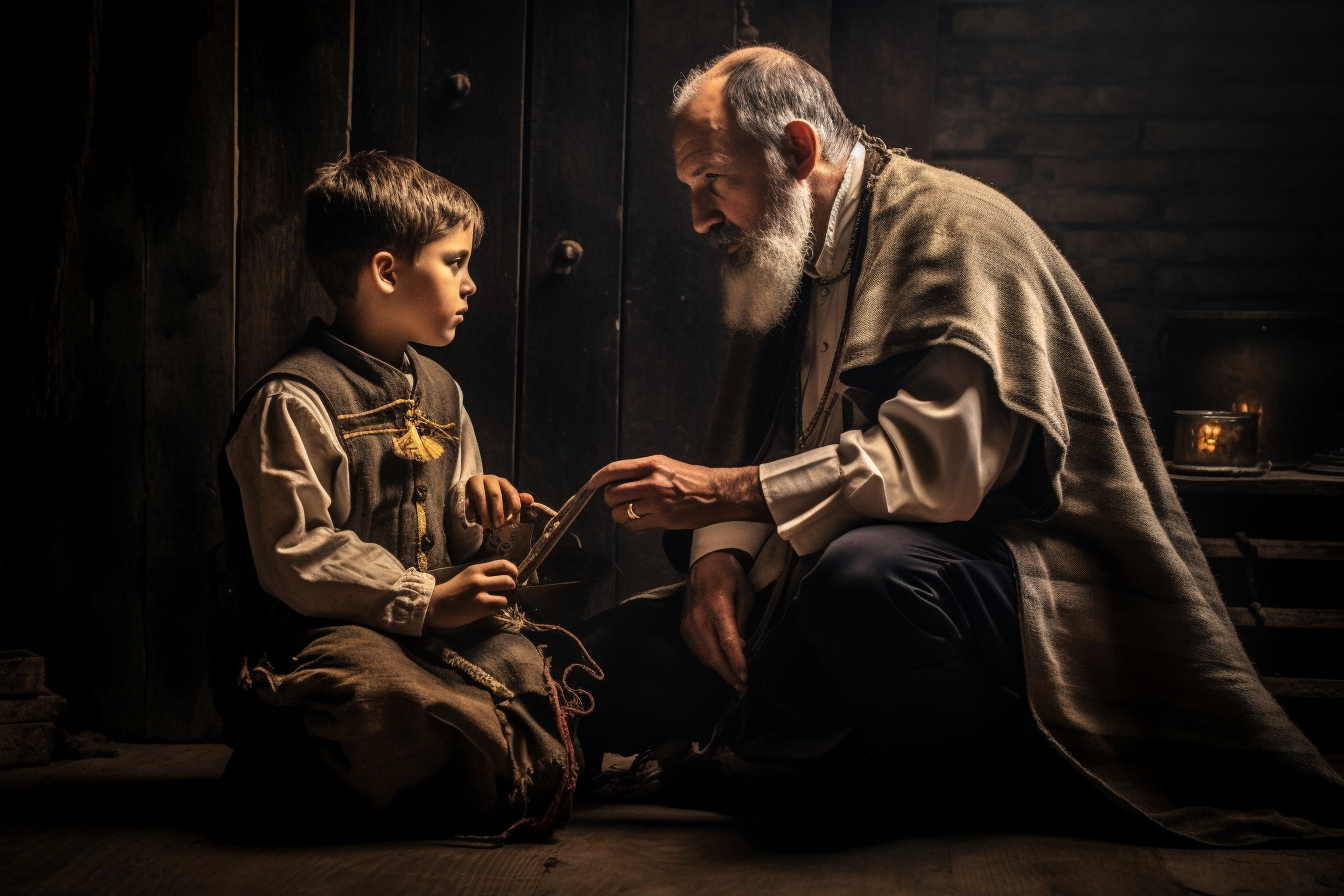
St. Blaise
St. Blaise
When They Lived
Saint Blaise, also known as Saint Blaise of Sebaste, is believed to have lived during the 3rd and 4th centuries. The exact dates of his birth and death are uncertain, but he is generally thought to have been born around 280 AD and to have died around 316 AD.
Where They Lived
Saint Blaise was born in the city of Sivas, which is located in modern-day Turkey. He later became the bishop of Sebaste, another city in the same region. Sebaste is known for being a significant center of Christianity during the late Roman Empire.
Notable World Events During Their Time
- Diocletian’s Persecution (303-311 AD): Saint Blaise lived during a time of intense persecution of Christians under the Roman Emperor Diocletian. This period marked one of the most brutal attacks on the Christian community, with countless believers being martyred for their faith.
- Edict of Milan (313 AD): During Saint Blaise’s lifetime, the Roman Empire underwent a significant change in policy towards Christianity. The Edict of Milan, issued by Emperor Constantine the Great and his co-emperor Licinius, granted religious tolerance to Christians and officially ended the persecution, allowing the faith to flourish.
- Founding of Constantinople (330 AD): Constantine the Great, a prominent figure during Saint Blaise’s era, established a new capital city for the Roman Empire – Constantinople (modern-day Istanbul). This event marked a monumental shift in the empire’s political and cultural landscape.
- Council of Nicaea (325 AD): The Council of Nicaea was a crucial event in the early Christian church. It addressed theological disputes, notably the nature of Christ’s divinity, and led to the formulation of the Nicene Creed, a foundational statement of Christian beliefs.
- Development of Early Monasticism: During Saint Blaise’s time, the foundations of Christian monasticism were being established by figures like Saint Anthony of Egypt. Monasticism played a significant role in shaping the spiritual and intellectual landscape of the era.
Their Patronage
Saint Blaise is widely recognized as the patron saint of throat ailments and other afflictions. The tradition of blessing throats on his feast day, February 3rd, continues to this day. According to hagiographical accounts, he miraculously cured a boy choking on a fish bone, which led to his association with throat-related illnesses.
The Legendary Bishop of Sebaste
St. Blaise is perhaps one of the most famous medieval martyrs in Catholicism. What we know about him comes from stories and traditions that have come down to the present. In accordance with various traditions, Blaise was born towards the end of the 2nd century. He was believed to have been born to wealthy and noble parents and was most probably a native of Sebastia, Cappadocia, in Asia Minor.
According to legends, most especially the apocryphal Acts of St. Blaise, Blaise was a physician before he was made a bishop. But he was not just a physician; he was a physician possessing the wonderful power of healing. All sources agree that Blaise was the Bishop of Sebaste in Armenia. At that time, a local community usually nominated a man to be a bishop according to his outstanding holiness and exceptional leadership qualities. Therefore, Blaise must have been a great witness and an example of faith, to say the least.
Although Christianity had become the state religion of Rome through Emperor Constantine’s Edict of Milan in 312, Licinius did not recognize the decree. He began a persecution of the Christians. Those who were suspected of being adherents of the Christian faith were sought and arrested. It was during that time that Blaise, the Bishop of Sebaste, was discovered and apprehended.
Blaise’s Miracles
In the apocryphal Acts of St. Blaise, when Blaise was arrested and being led to prison, he met a woman who rushed up to him and pleaded for him to save her only son. The woman’s son was choking to death because of a fishbone. Moved by the mother’s plea, Blaise interceded with his prayers. The boy was miraculously healed! Blaise, even in his life, was known for healing humans.

Numerous miracles were attributed to St. Blaise, including the cure of diseased animals when he was in his refuge. Yes, Blaise was also known for helping and healing animals! Stories say that when the persecution of Christians began, as instructed by the Lord, he withdrew to a cave in the woods. Blaise soon became the friend of animals that were wounded or ill. One day, hunters were searching for wild animals to bring to the city’s amphitheater. To their shock, they saw Blaise kneeling and praying and being surrounded by totally tame wolves, bears, and lions in his presence.
Another recounts a miracle that Blaise performed during his life. He met a poor woman who was greatly distressed because a wolf had snatched her small young pig. The woman asked for his help. Blaise commanded the wolf to return the woman’s pig. Some moments later, the wolf heard Blaise, and it brought back the pig, which was not harmed.
Bishop Blaise was tortured in various ways. He was whipped and raked with iron combs. Finally, the popular Bishop of Sebaste was beheaded. St. Blaise was venerated in the East by the 6th century and in the West by the 9th century. His cult spread throughout Christendom in the 8th century. Many churches are dedicated to him. His feast day is February 3.
5 Interesting Facts About St. Blaise
- He is venerated as the patron saint of sufferers from throat diseases and of wool combers.
- In the Middle Ages, he gained widespread popularity as one of the Fourteen Holy Helpers or Martyrs. Those who were with St. Blaise were Saints George, Erasmus, Pantaleon, Vitus, Christopher, Denis, Cyriacus, Acacius, Eustace, Giles, Margaret, Barbara, and Catherine.
- St. Blaise is venerated as a saint in the Catholic, Eastern Orthodox, and Oriental Orthodox Churches.
- During the feast day of St. Blaise on February 3, the blessing of the throats may be given by a priest, deacon, or lay minister who follows the rites and prayers designated for a lay minister. The blessing may be given by touching the throat of each person with two candles blessed on the feast of the Presentation of the Lord (February 2) that have been joined together in the form of a cross.
- St. Blaise rescued the city of Dubrovnik from the Venetian invasion.
Prayer to St. Blaise
Hear, O Lord, the supplications your people make under the patronage of the Martyr Saint Blaise, and grant that they may rejoice in peace in this present life and find help for life eternal. Through our Lord Jesus Christ, your Son, who lives and reigns with you in the unity of the Holy Spirit,God, for ever and ever Amen.



